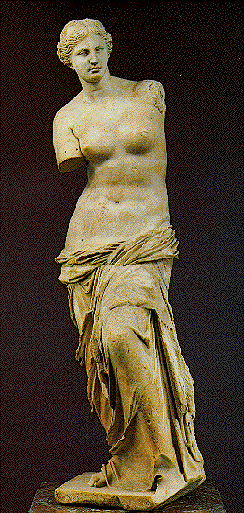Perhaps this letter requires some explanation. Germanic languages used to be written using runic alphabets. These were similar to the Latin alphabet, but tended to have more straight lines and fewer curves, and horizontal lines were avoided in favor of slanted or vertical ones (both tendencies presumably reflected the frequent use of knife-on-wood writing technology). The scribes who wrote Old English used as many as 33 different runes (the precise number is in dispute; the runic alphabet evolved over time and there is limited evidence for some of the characters, etc.). Under Christian proselytizing influence, the Latin alphabet was generally adopted, and only two runes survived: the wynn, which looked a lot like a P, and the thorn, which looked like a p with a neck splint. ISO Latin-1 preserves the latter -- Þ, þ -- because it is part of the Icelandic alphabet. (The character typically shows up as an fl-ligature on Macintosh machines.)
Out of a desire to avoid confusion (this was before the later deconstructionists) þ was gradually replaced by ``th''. The change was cheaper and easier to make in documents than on store-fronts, however, and long after thorns disappeared from paper documents, they remained on shop signs. There they were seen by readers who were not even aware that there had ever been such a character as a thorn. Thus arose the misconception that there was an archaic word ``Ye'' meaning ``The''. Go.
It could have been worse. Look at it this way: if the thorn had evolved differently, we'd have fond memories of a quieter time and ``Pe Olde Lipographie Shoppe.''
A related thing happened with ``Texas.'' The Spanish who misnamed it (texas was not a place name, but just the natives' greeting to the invaders) used ``x'' to represent our ``sh'' sound. Later, the sound as well as the letter disappeared from their Iberian language -- Castillian (what is called ``Spanish'' in the Americas and what was the enforced Spanish language under Franco; strictly speaking American Spanish is closer to Andalusian but that is essentially a dialect -- Castillian minus the lisp). (The original sound of x remained in Portuguese and in Catalan.) In tennis player Arantxa Sánchez Vicario's first name, the ``tx'' is pronounced like an English ``ch'', or like ``tsch'' in German.) Of course, Spanish-speakers do no better in treating the ``x'' as equivalent to the Spanish ``j'' (which, interestingly enough, is written /x/ in the IPA). Also, in the latest (PRC) Romanization scheme, Chinese writes ``x'' for the English ``sh'' sound that has been written ``hs'' (mostly Hong Kong) and ``sh'' (mostly ROC). It's too much. Obviously, the only solution is for everyone to learn English. Maltese and some other languages also use x for the "sh" sound.
(If you parsed all of the preceding paragraph in a single pass, you deserve a prize. However, I feel no need personally to make the award. So please, buy yourself a beer!) This is probably the appropriate place to add that in noninitial position, Portuguese ``x`` may also be pronounced /ks/ or /s/.
The letter x does seem to be implicated in many confusions. In French, scribes once had a fashion of streeeeetching out the final letter s in plurals, and then going back and crossing it. Just as in the case of thorn-nonadepts viewing old shop signs, new readers misread this -- as an x... At least this confusion doesn't lead to any new pronunciations, since final x and s are both generally silent. If this were a French primer, I guess it would be my responsibility to explain the exceptions, but this isn't. Oh well, since you insist: one major exception is when liaison occurs -- a word beginning in a vowel or aitch may be pronounced as a single word with the preceding word in a phrase. Thus, the ``s'' in the article ``les'' is often heard when followed by a noun beginning in a vowel or aitch. English avoids these problems by being so completely irregular that you have to consult a dictionary for the pronunciation of any word you don't know, and even for quite a few that you do know.
The other ``ye,'' the plural of thou, has a separate, less exotic etymology. The word ``you'' is not a misreading of ``thou.''
[ Thumb tabs and search tool]
[ SBF Homepage ]
And now, for those of you who followed the bait on the SBF homepage and still haven't got it, here's a picture of a real diva, that fabulous babe from Milo . . . Venus!

(Courtesy of the Louvre Museum.)
Havelock Ellis (and probably others whom I haven't read) observed that she was usually depicted as a blond. (Of course, the gold used to produce this effect was about the first thing to be vandalized.)
Actually, Venus is not completely irrelevant to runes: she bribed Paris to judge her the fairest in a competition with two other goddesses, and the bribe was that he could have the most beautiful woman in the world. Paris, a prince of Troy, took Helen, who happened already to be married to a Greek king; the Greeks went to war against Troy, and by the cleverness of Ulysses conquered it. As a result, people have been saying ``Beware Greeks bearing gifs'' ever since. Something like that. Also, a remnant of Troy set off and eventually founded Rome, which adopted the Etruscan alphabet and propagated it. So if it wasn't for Venus we might still be using runes.
Oops! Overshot the pointers.